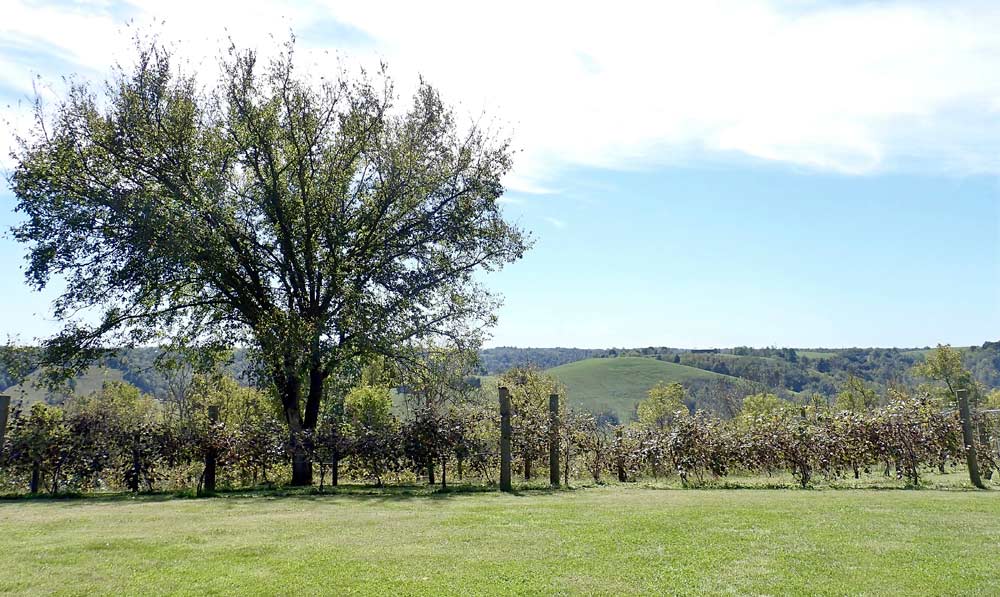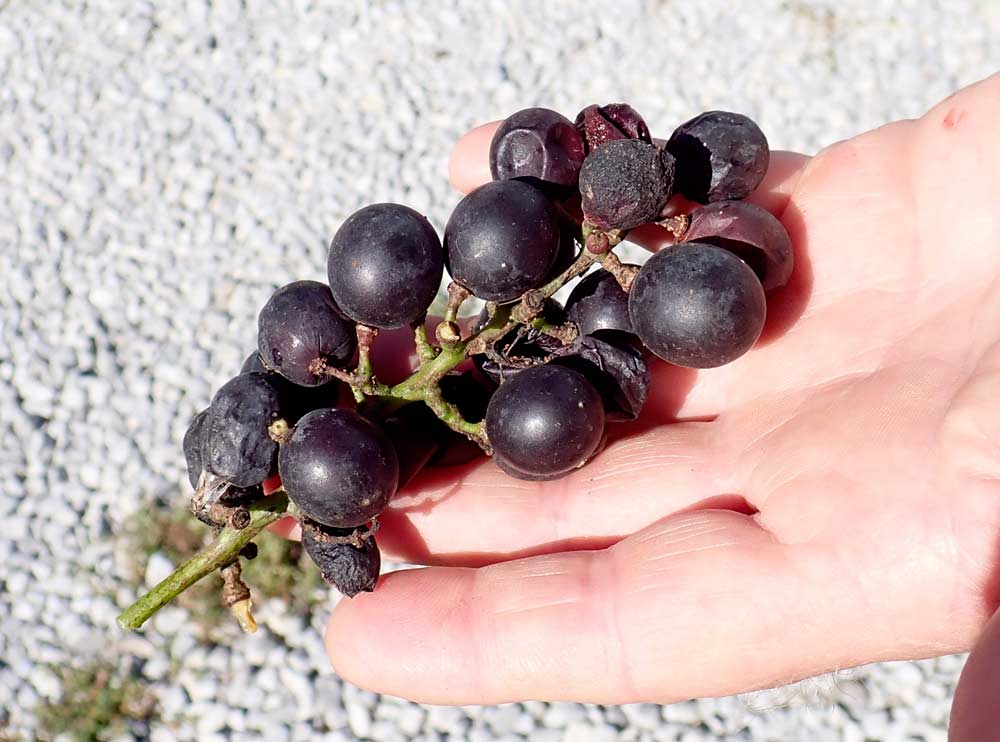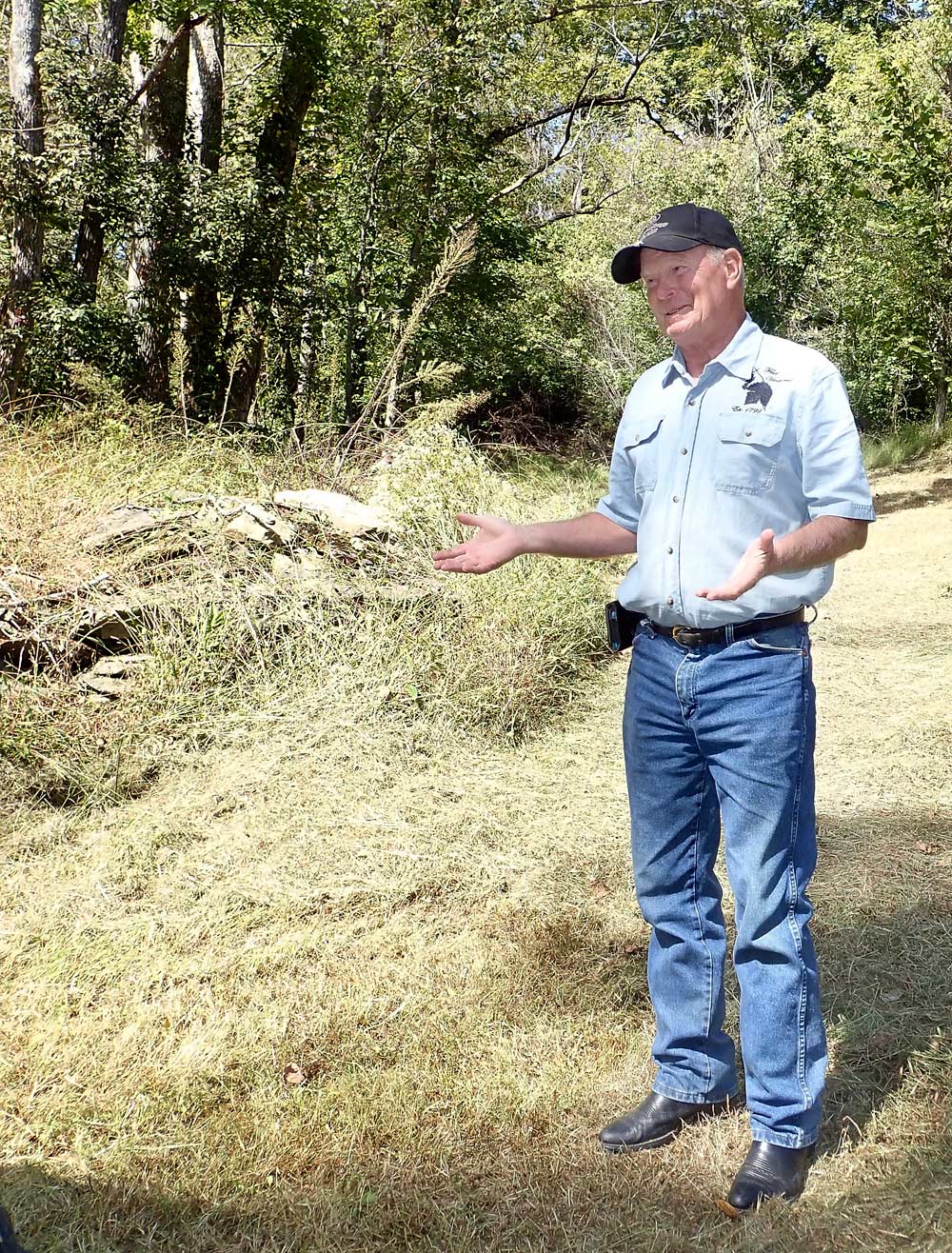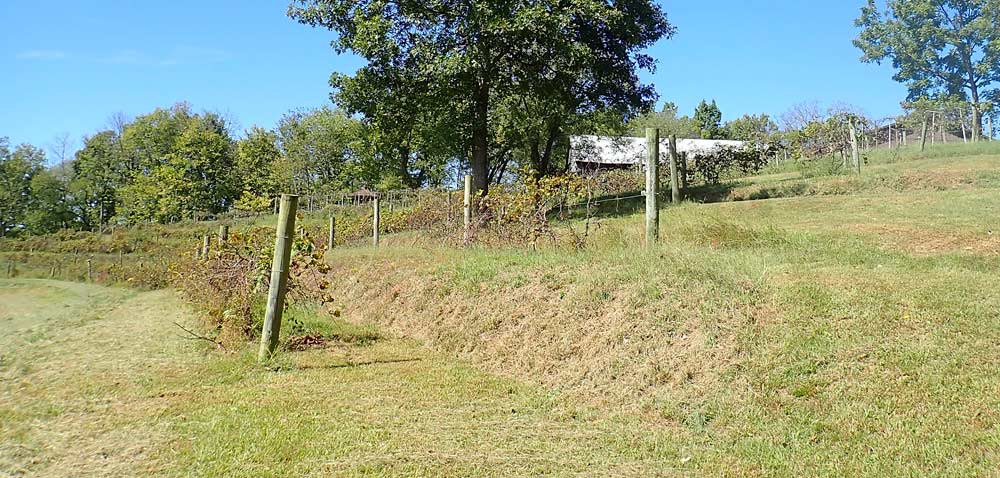
Years of research and a good helping of serendipity led to the exact location of the first commercial vineyard and winery in the United States, and it wasn’t in Virginia or California, but in Kentucky, a state known far more for tobacco and bourbon than wine.
As fate would have it, the original vineyard and winery are on land purchased by a history buff who is now on a mission to make sure his state’s place as the founder of the U.S. wine industry is not overlooked again.
Owner Tom Beall with close friend and business partner Bobbye Carpenter have invested hundreds of hours documenting the past and have also restarted the vineyard, going so far as to track down and replant the same variety of historic grapes that were on the site more than two centuries ago. They hope to commercially bottle the first wine from those grapes this fall. “It will be neat to say, ‘This is what started the industry in this country,’” Beall remarks.

Both former police officers, Beall and Carpenter had never grown grapes or made wine before this endeavor, which is called “The First Vineyard” and located in a picturesque, secluded spot overlooking the Kentucky River. When asked why they decided to revive the old vineyard and winery, Carpenter simply said, “How could you not? How could you know it’s the first vineyard and not start it again if you love history?”
The story of The First Vineyard is peppered with a litany of prominent early Americans (see “The rich history of The First Vineyard” on Page 64), but the main character is Swiss immigrant John James Dufour. After arriving in America in 1796, Dufour spent nearly two years scouting for a vineyard location before settling on this site in central Kentucky.
“A bunch of things made this property unique, and one of the biggest was that there was a busy shipping port right there on the river,” Beall said, pointing down beyond his rows of terraced vines.
“With the port, Dufour could put his wine on a flatboat that would take it to New Orleans, and from there, to anywhere in the world.”
In addition, the property had a well-suited, south-facing slope that could be terraced to prevent erosion and augment water absorption, as well as geology that featured a sandstone cap over limestone. The sandstone was ideal for drainage, and the underlying limestone could be excavated and used for fences and buildings.
For grapes, Dufour tried a wide variety, but focused on two: a white grape he called Madeira and a red he called the Cape Grape. The First Vineyard soon began producing Madiera and Cape wine for commercial sale.

It also supplied cuttings from its vines to the group of shareholders (called “subscribers”) who contributed to the venture with the idea that they could go on to establish their own vineyards and wineries.
Unfortunately, 1809 brought a severe freeze to the vineyard and ravaged the plants, and The First Vineyard closed soon after. The First Vineyard’s significance in launching the wine industry in America faded and then disappeared completely as the property was bought and sold in the ensuing years.
Fast-forward to 1994: Beall purchased the property for its scenery. “I was planning to just put an A-frame out here and come out on the weekends to sit and look out over the river,” he says. Before he got around to building the A-frame, he got some news from neighbor Don Graham, who is a wine aficionado. Graham had come across a copy of a newly published book called Indiana Wine: A History.

In the book, authors James L. and John J. Butler determined that the first U.S. commercial vineyard and winery was located somewhere in Kentucky, but with only a rather vague description and map of the site, they couldn’t determine the exact location. Graham, however, immediately recognized the site, and notified Beall that it was located on his property.
“Once we heard this, Bobbye and I wanted to re-establish it with the original grapes,” Beall recalls.
He eventually learned that Madeira at the time was a generic name for numerous different grapes, so the exact variety still remains a mystery. The Cape Grape, however, turned out to be the Alexander, a variety that is an accidental hybrid of a European vinifera and the indigenous American Vitis labrusca.
With no luck finding the Alexander, Beall was beginning to think it was extinct. As a last resort, he reached out to the U.S. Department of Agriculture’s germplasm repository in Geneva, New York. The repository not only had two Alexander vines, but also agreed to send Beall 40 cuttings.
“Of those 40, 37 of them lived,” Beall relates. “We’ve been taking cuttings off of them every year since to propagate a few more,” he said. The winery hopes to bottle this year. “We think we can get at least 250 bottles of Kentucky Alexander.”

Besides the thick-skinned and sweet Alexander grape, The First Vineyard grows three additional varieties — Norton, Diamond and Concord — and produces a collection of wines under the J.J. Dufour label.
Annual production totals about 6,000-8,000 bottles. The new Kentucky Alexander will be the seminal wine Beall releases under The First Vineyard label (pending TTB approval of the label). “We wanted The First Vineyard label on the Kentucky Alexander, because that was the original grape from the original vineyard,” Beall explains.
Now 71, Beall doesn’t know how much longer he will be able to continue to run the vineyard and winery. He hopes someone who appreciates its significance will step up to keep it going as a working operation and potentially construct a museum to showcase the important and rare historical documents he and Carpenter have accumulated, as well as some of the artifacts they have discovered on the property.
With a look out over the vines and the river valley, he said, “This is where the wine industry started. Right here. If you would have asked 100 people where the first commercial vineyard and winery was, 99 of them would have said California or the East Coast, but it’s Kentucky. This is too unique and too important to forget again.” •
The rich history of The First Vineyard
1796 – Swiss immigrant John James Dufour arrives in America and begins his search for land to plant a vineyard and start the nation’s first commercial winery. It takes nearly two years, but he finally finds a suitable site south of Lexington, Kentucky, on a tract that had been surveyed in 1783 by frontiersman Daniel Boone.
1798 – Dufour solicits for shareholders, or “subscribers,” to establish a vineyard and winery. For their investments, each subscriber is entitled to send their male heirs to The First Vineyard to learn the trade and to receive 1,000 vine cuttings to start their own operations. Subscribers represent a “who’s who” of early America, including U.S. Congressman and Secretary of State Henry Clay, Kentucky Gov. James Garrard, U.S. Congressmen John Brown and John Edwards, and U.S. Secretary of the Treasury and Senator George M. Bibb. Famed statesman and then Virginia Gov. Patrick Henry (“Give me liberty, or give me death!”) granted the deed to the property.
1799 – Dufour begins planting vines on the property, which he appropriately names “The First Vineyard,” and produces his first wines a few years later. Two U.S. Presidents — Thomas Jefferson and James Madison — received wine from The First Vineyard.
1806 – Dufour leaves the vineyard and winery in the charge of his brothers while he travels to Switzerland to bring the remainder of his family to Kentucky. His return is impeded for a full decade, because of the ongoing conflict between Great Britain and the United States.
1809 – A hard freeze devastates the crop at The First Vineyard, and the Dufour brothers abandon the property and move to Indiana. Once the First Vineyard closes, its seminal role in the U.S. wine industry is eventually forgotten.
1994 – Tom Beall purchases a 30-acre parcel of property for its natural beauty. It is located south of Lexington, Kentucky, on the “big bend” of the Kentucky River.
2002 – Out of the blue, Beall learns that The First Vineyard was located on his property, and with that news, he decides to plant grapes on the property once again. He and business partner Bobbye Carpenter, who are both former police officers, put their investigative skills to use and undertake what will turn into years of research into The First Vineyard. In that enquiry, Beall finds that his own six-times-removed grandfather was one of the original subscribers of The First Vineyard.
2006 – Beall and Carpenter find the terraces that Dufour constructed for his vines, and prepare them for planting the following year.
2012 – After amassing meticulous documentation verifying that the site is indeed the inaugural commercial vineyard and winery in the United States, Beall and Carpenter officially reopen The First Vineyard. They offer a collection of wines under the J. J. Dufour Winery label.
2015 – The First Vineyard is entered into the National Historic Register (bit.ly/FirstVineyard).
2017 – Beall plans to reinstate The First Vineyard label with the release of Kentucky Alexander, a red wine made from the vineyard’s harvest of Alexander grapes. Alexander is the same variety that Dufour planted and fermented at The First Vineyard more than two centuries ago.
—by Leslie Mertz






Tried their wine for the first time at the 2018 Taste of Cincinnati. Outstanding! Will definitely take trip down to the winery at some point.
They have converted me into a wine drinker. Due to their Blackberry and Diamond wine . Also love these guys such great people.
Been there. fascinating history- you did forget to mention they have Norton the one rue grape grown only in KY, VA, SC and Missouri
Norton is also grown in Ohio. Meranda Nixon in Ripley has an excellent estate grown Norton wine,
Really would love to try it. Can’t get them to ship it to me.